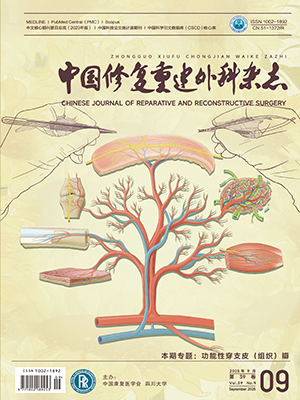| 1. |
Fichtner J, Hofmann N, Rienmüller A, et al. Revision rate of misplaced pedicle screws of the thoracolumbar spine-comparison of three-dimensional fluoroscopy navigation with freehand placement: A systematic analysis and review of the literature. World Neurosurg, 2018, 109: e24-e32.
|
| 2. |
Zhao Q, Zhang H, Hao D, et al. Complications of percutaneous pedicle screw fixation in treating thoracolumbar and lumbar fracture. Medicine (Baltimore), 2018, 97(29): e11560.
|
| 3. |
Kosmopoulos V, Schizas C. Pedicle screw placement accuracy: a meta-analysis. Spine (Phila Pa 1976), 2007, 32(3): E111-120.
|
| 4. |
李超, 牛国旗, 蒋维利, 等. 个体化 3D 打印导向模板辅助胸腰椎椎弓根螺钉置入在强直性脊柱炎中的应用研究. 中国骨伤, 2020, 33(7): 649-654.
|
| 5. |
Aoude AA, Fortin M, Figueiredo R, et al. Methods to determine pedicle screw placement accuracy in spine surgery: a systematic review. Eur Spine J, 2015, 24(5): 990-1004.
|
| 6. |
Chen H, Guo K, Yang H, et al. Thoracic pedicle screw placement guide plate produced by three-dimensional (3-D) laser printing. Med Sci Monit, 2016, 22: 1682-1686.
|
| 7. |
Nevzati E, Marbacher S, Soleman J, et al. Accuracy of pedicle screw placement in the thoracic and lumbosacral spine using a conventional intraoperative fluoroscopy-guided technique: a national neurosurgical education and training center analysis of 1236 consecutive screws. World Neurosurg, 2014, 82(5): 866-871.
|
| 8. |
Roy-Camille R, Saillant G, Mazel C. Internal fixation of the lumbar spine with pedicle screw plating. Clin Orthop Relat Res, 1986, (203): 7-17.
|
| 9. |
Rajasekaran S, Vidyadhara S, Ramesh P, et al. Randomized clinical study to compare the accuracy of navigated and non-navigated thoracic pedicle screws in deformity correction surgeries. Spine (Phila Pa 1976), 2007, 32(2): E56-64.
|
| 10. |
Xie CL, Huang QS, Wu L, et al. Transmuscular ultrasonography of the placement of thoracolumbar pedicle screws: A cadaveric study. World Neurosurg, 2018, 115: e360-e365.
|
| 11. |
Chen X, Gao X, Zhang G, et al. Design, application, and evaluation of a novel method for determining optimal trajectory of thoracic pedicle screws. Ann Transl Med, 2020, 8(16): 1012.
|
| 12. |
Xu W, Zhang X, Ke T, et al. 3D printing-assisted preoperative plan of pedicle screw placement for middle-upper thoracic trauma: a cohort study. BMC Musculoskelet Disord, 2017, 18(1): 348.
|
| 13. |
Tan LA, Yerneni K, Tuchman A, et al. Utilization of the 3D-printed spine model for freehand pedicle screw placement in complex spinal deformity correction. J Spine Surg, 2018, 4(2): 319-327.
|
| 14. |
Tu Q, Ding HW, Chen H, et al. Three-dimensional-printed individualized guiding templates for surgical correction of severe kyphoscoliosis secondary to ankylosing spondylitis: Outcomes of 9 cases. World Neurosurg, 2019, 130: e961-e970.
|
| 15. |
Wang K, Zhang ZJ, Chen JX, et al. Design and application of individualized, 3-dimensional-printed navigation template for placing cortical bone trajectory screws in middle-upper thoracic spine: Cadaver research study. World Neurosurg, 2019, 125: e348-e352.
|
| 16. |
吴超, 谭伦, 林旭, 等. 3D 打印个体化矢状曲度模棒及椎弓根螺钉导航模板在胸腰椎骨折脱位术中的应用. 中国修复重建外科杂志, 2015, 29(11): 1381-1388.
|




